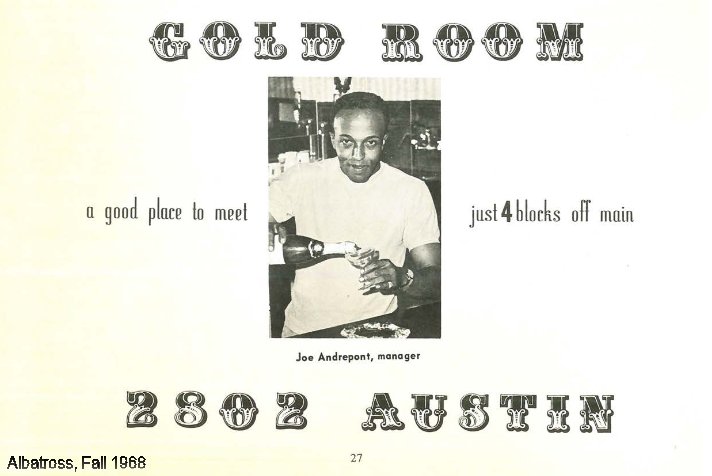Southern Black Queer Spaces
Figure 1. This map shows the number of locations listed in the Damron Guides and categorized as (B) for each year from 1965 to 1980. Use the slider to change the year or hit the play button to animate the map. Click here for a more expansive map exploring the LGBTQ past since 1965.
With our data from U.S. South from 1965-1980 now live, an investigation into race seems particularly important. We’ll likely do several short vignettes on race in the future, but Damron’s guides don’t offer us the best mechanism to explore the racial atmosphere of queer spaces. For example, the only establishment feature that deals specifically with race is the designation “B” for “blacks predominate.” Damron first used this designation in the 1970 publication, the only new listing classification for that year. In 1972, Damron changed the explanation of “B” to “blacks frequent,” which would continue throughout the rest of the decade. You’ll notice in our interactive map that no black southern queer spaces exist in the map until 1970. This is not because there weren’t spaces frequented by black gay men until the 1970s; it means that no designation for “B” was included until 1970.

Figure 2.Advertisement for the Gold Room, from Albatross, Fall 1968. Credit J.D. Doyle, Houston LGBT History.org

Figure 3.Description of the Gold Room's Opening, Albatross, Summer 1968. Credit J.D. Doyle, Houston LGBT History.org
You’ll note that one black gay space that exists in the first year of the “B” designation in 1970 and through the 1978 guide is Houston’s Gold Room. Throughout the 1970s, Damron lists the Gold Room as a popular dance bar that catered to African Americans in Houston’s Midtown neighborhood. The Gold Room is a good example of how a quick glance at our data doesn’t give you the fullest picture of a bar’s history. The Gold Room opened in 1968, but because Damron didn’t begin his “B” designation until 1970, we don’t see it listed as a black space until the 1970 guide.
Early advertisements and descriptions of the Gold Room hint at the bar’s attractiveness to non-white clients. In a 1968 summary of the bar’s opening, the Albatross newspaper excitedly reported that the Gold Room was “a wonderful addition for those who have their coffee with cream.” This likely is a reference to how other Houston bars at the time weren’t embracing patrons of color. With the addition of the Gold Room to Houston’s gay bar culture, the Midtown gayborhood was now “TANsational!”
As you explore the map, what other trends on race do you notice?
Originally Published: February 5, 2020 | Last modified: February 11, 2020